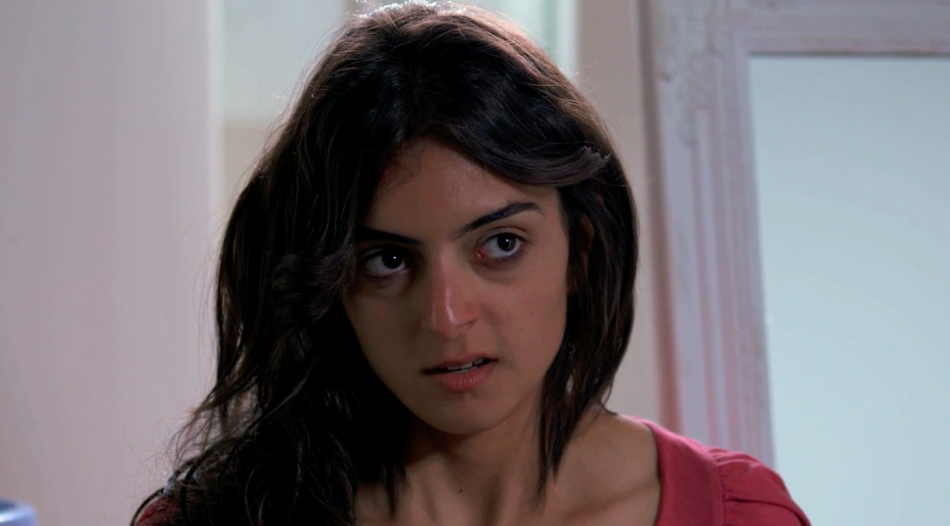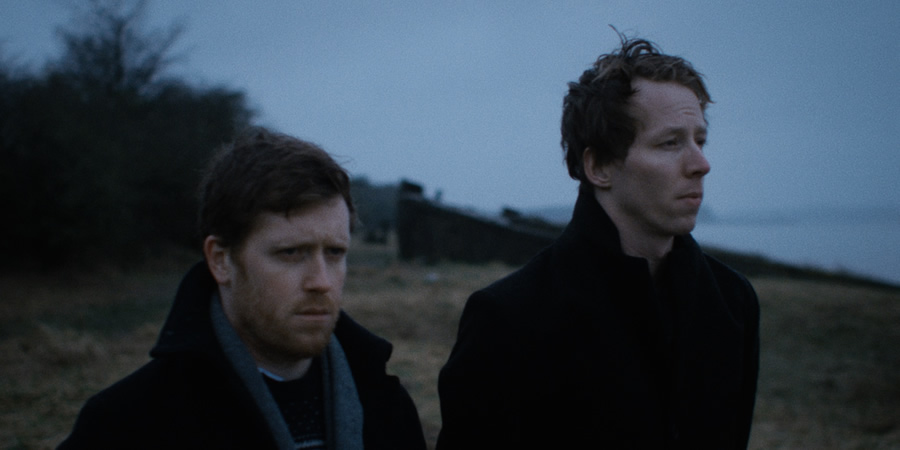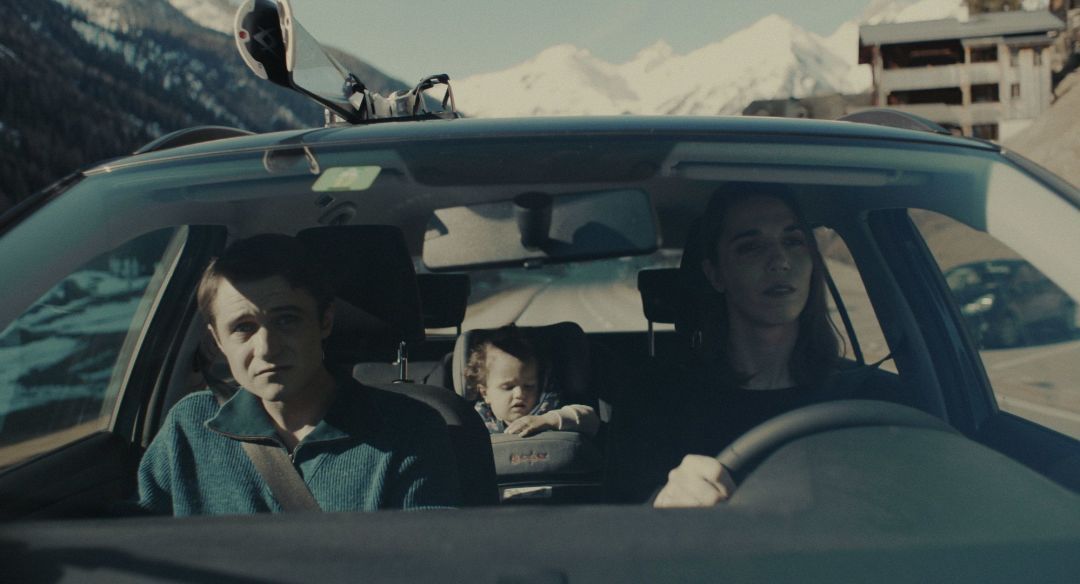By Olivia Savage, Third Year, Film & TV
One of the short film collections being shown at Rebel Film Festival on the Saturday includes works from around the world with a variety of perspectives on the theme.
Make Yourself at Home (dir. Heli Hardi)
Make Yourself at Home is a subtle yet effective political film directed by Heli Hardi, which explores the divides and disparity between two young girls from each side of the Israeli-Palestinian struggle.
The film follows the perspective of Rauda, a poor Muslim girl who begins her new cleaning job at a wealthy Jewish home. Hardi interestingly mirrors Rauda with Noya, the daughter of the wealthy family who is also the same age as Rauda, presenting to the audience their similarities yet stark differences; mainly being religious beliefs and overwhelming wealth differences. Here Hardi quietly depicts to the audience the wider topical divides that are present in Israel, yet the relationship between the girls is one of honest amiability.

Rebel Film Festival / Make Yourself at Home (dir. Heli Hardi)
As Rauda completes her mundane cleaning, the dynamic of Noya’s house is not what it appears to be. The slow yet unusual tempo of the piece providing random and jarring moments of action and intrigue, such as the shocking moment the audience believe Noya has drowned in the swimming pool, only to soon reveal through a mesmerizing underwater shot of her cheeky smile that it was all a ploy.
The representation of Adam, Noya’s sleazy and flirtatious boyfriend, seems an unusual and arguably irrelevant choice in the film, especially as I was more engrossed in the relationship with the two girls rather than Adam. However, whilst Adam’s role as a seducer of Rauda appears predictable and likely, his attraction to her encloses the divide between the two girls further and suggests to the audience that a wealthier environment is not always such a good and safe place, a point Heli Hardi touched upon in an interview herself.
The most striking visual imagery in Make Yourself At Home revolves around the importance of water, something which I later found out was the inspiration for the film’s purpose. For example, the narrative begins with a glimpse into Rauda’s impoverished and sparse home, where there are piles of empty plastic water bottles lying around to be refilled, highlighting the lack of running water and sanitation in her home.
In contrast, Noya’s home is dominated by aquatic imagery, as one of the first things we see when we enter with Rauda is a luxurious and deep blue swimming pool, which glistens in the hot sun. Rauda uses an abundance of water to splash and clean the floors, having similar imagery to the opening of Roma (2018), which too revolves around the life of a domestic maid in a wealthy home.
In one particularly beautiful moment, the ripples of the swimming pool are reflected onto the glass in front of Rauda as she looks out the window, presenting cinematically the barrier between herself and this vital yet affluent liquid. The abundance of water in Noya’s house is therefore symbolic of their wealth, something in which Rauda has to steal in her plastic bottles in order to survive, presenting powerful imagery to the audience. Perhaps this symbolism is aimed to provide a stark warning about the troubles in Israel, especially with the recent headlines of severe droughts and water shortages presenting an uncertain future of the supply and perhaps the wealth of Israel.
Make Yourself at Home is a subtle yet unique perspective on the troubles of the Israel-Palestine conflict occurring right now, something that is vital for audiences to experience.
Spokke (dir. Jim Archer)
Jim Archer’s Spokke is a hilarious yet surreal, Scandi-noir inspired comedy that is my favourite film featuring in ‘The Divided’ collection at Bristol Rebel Film Festival. The fast-paced and punchy, trailer-style narration explores a series of crimes which occur on the boundary between two police forces, creating an unlikely alliance between two weary policemen from each side of the county.
Unlike the more serious issue of division in Make Yourself at Home, Spokke’s focus on the dividing counties creates an unusual comical starting point, which sets up the rest of the film for its bizarre and witty humour. Whilst the humour is silly, Archer nevertheless takes on the theme of division with brilliant attention to detail, especially when emphasising the big guy, little guy trope between the police duo.

Rebel Film Festival / Spokke (dir. Jim Archer)
For example, the opening credits echo this by presenting an establishing shot of a bleak ice-blue sky amongst two grey, high rise buildings mirroring each other. Noticeably, one building is smaller and fatter, being representative of Detective Bill Sorensen (Shaun Lowthian), whilst the other is taller and lanky-looking, like Detective Jed Flitcroft (Tim Grewcock), cinematically mirroring the relationship between the policemen.
Spokke provides a unique mashup of Nordic noir aesthetics with deadpan British humour, creating a two and a half minute film which made the audience at Rebel Film Festival chuckle relentlessly. One memorable moment of this interesting play on British and Scandi culture occurred in the opening credits where one title read, ‘Based on the novel by Henrik Larsson’, comically making light of Swedish popular culture.
However, the audience is soon revealed that the murderer is no ordinary one: it’s, in fact, a bike killer, with a series of unfortunate bikes being brutally ‘slashed’, ‘hung’ and ‘D-locked’ around the Somerset and Gloucestershire vicinity. But who is doing such a thing? Whilst the audience never discover who this sadistic bike killer is, Spokke nevertheless keeps you on your toes and laughing all the way throughout, providing a refreshing mock of the overdone genre on BBC TV, let alone native Nordic channels.
Vimeo / Jim Archer
The snappy and quotable dialogue between the two detectives is a significant element to Spokke’s success. For example, whilst more on the surrealist side of the humour, a running theme throughout the narrative lies an important question; why does paper beat rock in Rock, Paper, Scissors? Detective Bill Sorensen asks this in a serious tone (‘I think I don’t quite understand why paper beats rock’), setting up this voiceover discussion at random moments in the narrative, and presenting this random but funny discussion between the deadpan detectives. Maybe the prevalence of rock, paper, scissors has a deeper symbolism that I couldn’t grasp, but nevertheless, the peculiarity that it brings to the overall atmosphere in the short film is superb and comically on-point.
Spokke’s trailer structure certainly had myself excited at the prospect of a full series; let’s hope Jim Archer gets the commission. However, if you did not get to see Spokke at the Rebel Film Festival, you’re lucky that you can access it online on Vimeo and watch it for yourself.
Dornheim (dir. Sebastian Herbst)
Dornheim by Sebastian Herbst is a strange and mysterious short thriller revolving around the problematic nature of isolation and division within rural Franconian communities. The narrative follows three middle-aged men who meet on a daily basis in a grotty, grey and empty pub with nothing better to do other than gossiping about small-town ruckus and drink endless pints of beer, echoing a sense of bleak alcoholism underlying the film’s narrative.
Soon enough, one of the men expresses fear over the arrival of a new and mysterious young man in the local abandoned house, resulting in the three men being in an obsessive state of curiosity and anxiety over what his purpose may be. With anxieties growing to obsession, a change in tone occurs in the film and the atmosphere becomes extremely tense and gripping, resulting in the men deciding to investigate the barn for themselves, leading to ambivalent yet tragic consequences.

Rebel Film Festival / Dornheim (dir. Sebastian Herbst)
While the plot lacks originality and substance, the striking cinematography present in Dornheim caused me to watch in amazement, and it adds a sense of depth to the film. The opening montage shows a series of beautifully shot woodland items, such as moss, decaying plants and rotting wood, which creates an alluring representation of a forest and symbolises the decaying nature of the town of Dornheim.
The cinematography also echoes this imagery with its highly stylised and gloomy colour palette of green and grey shades, furthering this visual representation of the town with an uncertain and sinister atmosphere. Notably, the strong green hue present in Dornheim contrasts starkly with the ominous red Franconian barn where the mysterious man lives, showing how Herbst cleverly uses this contrast to present danger and warn audiences over what lies there.
Dornheim’s style also has strong connections to the horror genre, and at times, there’s a strong resemblance to Hitchcock's Psycho. For example, when the three men slowly edge towards the abandoned house in search for the mysterious man, the slow, cautious walk and subsequent tense camerawork was reminiscent of when Lilia approaches the Bates mansion. Not to mention, the eerie and unsettling shrieking violin musical accompaniment strongly echoes Bernard Herrmann’s infamous and iconic soundtrack.
Finally, the director, Herbst, states that Dornheim is a film aiming to represent the xenophobia present in rural Franconia, showing its links to the theme of division. Whilst I understood Herbst’s illustration of this xenophobia present in the three men, I did, however, find the ending odd and unsatisfactory in hindsight.
SPOILER ALERT
The idea that the mysterious man is actually a dangerous paranormal entity suggests the three men's xenophobic fears were valid, something which seems odd to highlight when thinking about the problems with prejudice. Whilst this ending was indeed gripping and tense, it is predictable and unsurprising, resulting in the feeling of dissatisfaction and disappointment.
Thin Air (dir. Jonas Ulrich)
Thin Air is a short-film directed by Jonas Ulrich exploring the mesmerizing yet unusual portrayal of a family’s ski holiday to the Swiss Alps. It innovatively subverts expectations by presenting the holiday as one consumed by horror, suspense, and terror. The atmosphere of the film is dominated by a gripping yet sinister feel, with the ambiguous camerawork being reminiscent of a stalker’s binoculars following Georg and his young daughter, which raises dark questions over the intent of this move.
As tensions continue to rise, a darkly dressed and mysterious figure horrifically whacks at Georg and Livia’s sled with a ski pole, ultimately sending them off the edge of the piste in a malicious and confusing attack. Who would do such a thing? And why does the mysterious dark figure seem to know the mother? Thin Air is a powerful psychological thriller that importantly highlights the ambiguities of reality when suffering from mental health conditions like schizophrenia, which presents a refreshing and empathetic insight into the distressing impact the disorder can have on a family.
Vimeo / CUT-UP
The most striking and powerful moment in Thin Air occurs when Georg and Livia are hiding in the bathroom away from their ‘stalker’ and attacker. The film’s eerie atmosphere occurs from the absence of music and heavy use of silence in the narrative, creating uncomfortable moments of tension whilst also being representative of Georg’s isolated and deluded mental perception.
However, when Georg’s wife, Anna, knocks on the bathroom door and demands answers to why they are locked inside, this motif of silence gets disrupted and the first instance of heavy dialogue dominates the film. The camera breaks away from Georg’s point of view and intimately frames Anna’s head pressed against the door, where she softly reaches out to Georg in calm and empathic dialogue, giving Georg the clues he needs to piece together the puzzle of reality.
Anna’s dialogue is therefore a significant moment in breaking Georg’s subjective narration of what is occuring in the narrative, importantly providing contradictory information for the audience on what the reality of the situation is, resulting in a overwhelming sense of melancholy for Georg’s and the despair revolving his deluded mental state. This moment is overwhelmingly moving and its poignant use of dialogue is an important message about the importance of discussion and communication when suffering from a traumatic mental health disorder.
Featured Image Credit: Rebel Film Festival / Thin Air (dir. Jonas Ulrich)
Can film be used to bridge divisions in society?
Facebook // Epigram Film & TV // Twitter







